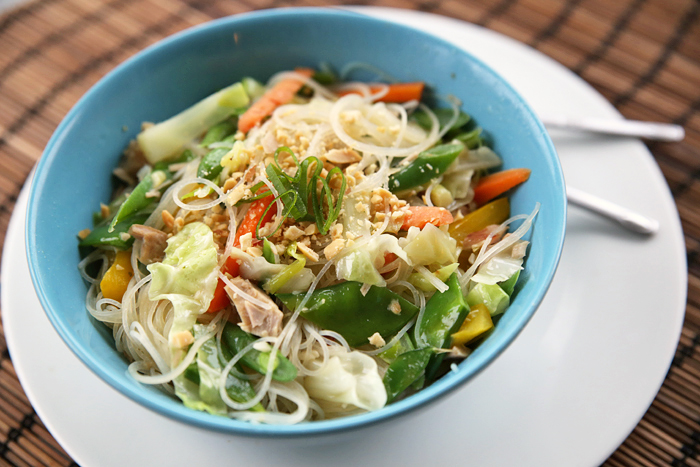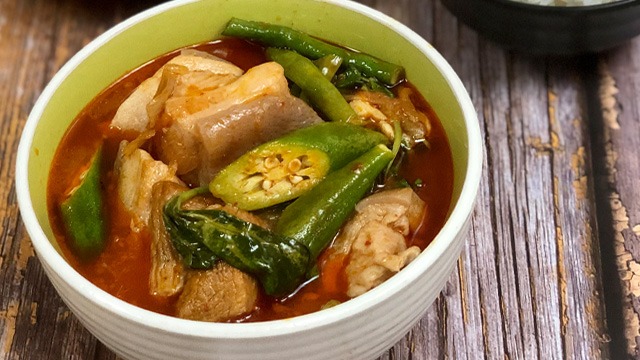Simplified Filipino Food Recipes for Beginners.
Wiki Article
Explore the Rich Taste of Filipino Cuisine With These Must-Try Recipes
Filipino food supplies an exceptional tapestry of flavors that reflect the nation's rich cultural heritage. Each meal narrates, from the full-flavored depth of Adobo to the rejuvenating flavor of Sinigang, welcoming cooking lovers to explore a diverse selection of tastes. The festive allure of Lechon and the comforting heat of Kare-Kare additionally enhance this gastronomic trip, while the vivid Halo-Halo supplies a wonderful final thought to any type of dish. As we consider the nuances of these famous dishes, one have to ponder how they not only please the taste buds but additionally connect us to a wider cultural narrative.Adobo: The Famous Recipe
Adobo has emerged as the ultimate meal of Filipino food, exciting palates both in your area and abroad. This precious dish is defined by its unique mix of tasty, sour, and somewhat wonderful tastes, attained via a careful marination procedure. Commonly, adobo is prepared making use of chicken or pork, although variations exist that integrate fish and shellfish and vegetables.The basic components of adobo include soy sauce, vinegar, garlic, bay leaves, and black pepper, which together create an abundant and fragrant sauce. The food preparation method normally entails simmering the meat in the sauce, permitting it to take in the complex flavors while softening. This procedure not only enhances the preference but also functions as a natural preservative, making adobo an ideal meal for storage space.
Adobo is commonly offered with steamed rice, which enhances its durable flavor profile. Each region in the Philippines boasts its own version, mirroring neighborhood ingredients and cooking customs. This adaptability talks with the recipe's cultural significance and withstanding popularity. Whether appreciated at home or in restaurants, adobo remains a staple that symbolizes the significance of Filipino friendliness, making it a must-try for anybody discovering this lively cuisine.

Sinigang: A Tangy Delight
An additional foundation of Filipino food is sinigang, a dish celebrated for its unique appetizing flavor. This full-flavored soup is typically made with a selection of meats, including pork, beef, shrimp, or fish, and is identified by its sour brew, which generally stems from tamarind, environment-friendly mango, or calamansi. The balance of acidity and umami creates a rejuvenating contrast that is both reassuring and stimulating.Sinigang is often enriched with a variety of fresh vegetables such as radish, eggplant, water spinach, and string beans, adding not only to the dish's taste profile however additionally to its nutritional value - Filipino food recipes. Each family members might have its own version, with local variations that show local components and cultural impacts
The prep work of sinigang involves simmering the chosen meat till tender, complied with by the addition of the souring agent and veggies. This approach enables the tastes to combine wonderfully, leading to a passionate and gratifying dish. Typically served with fit to be tied rice, sinigang personifies the essence of Filipino hospitality and is a precious staple, typically enjoyed throughout family members events and unique occasions.
Lechon: The Festive Roast
Lechon, usually considered the focal point of joyful Filipino parties, is a delicious roasted pig understood for its crunchy skin and tender, savory meat. This renowned meal is deeply rooted in Filipino society, often gracing tables during birthday celebrations, wedding events, and considerable vacations. The preparation of lechon is an art form, requiring precise interest to detail, from seasoning the pig with a blend of seasonings to making certain an also roast over an open fire or in a specialized stove.Commonly, the pig is seasoned with a blend of salt, pepper, and local herbs, giving an abundant taste that enhances its all-natural juiciness. The cooking process can take a number of hours, during which the skin changes right visit this web-site into a perfectly crispy layer, creating a fascinating contrast to the delicious meat under.
Lechon is traditionally offered with a side of liver sauce or vinegar dip, improving its savory account. It is not just a meal however a communal experience, as families and pals gather around to appreciate this delicious dish. The aroma of lechon wafting through the air is an invitation to delight, making it a beloved sign of celebration in Filipino society.
Kare-Kare: Oxtail Stew
Kare-Kare, an abundant and passionate oxtail stew, holds a special place in Filipino cooking custom, commemorated for its distinct flavor profile and lively presentation (Filipino food recipes). This meal is defined by its lush peanut sauce, which is produced by grinding baked peanuts or using peanut butter, giving it a creamy and nutty significance. Generally, kare-kare functions tender oxtail, although variants may include tripe or beef shank, each adding to the stew's depth of tasteThe preparation of kare-kare typically includes slow-cooking the meat until it comes to be exceptionally tender. The enhancement of a range of veggies, such as eggplant, string beans, and banana hearts, not only enhances the stew's nutritional worth however also its visual charm. Served with a side of bagoong, or fermented shrimp paste, kare-kare magnificently stabilizes its abundant, full-flavored notes with a salted kick.
Typically taken pleasure in during unique occasions and household celebrations, kare-kare symbolizes the essence of communal eating in Filipino society. Its delightful intricacy and comforting heat make it a meal that is not just pleasing to the taste however additionally evokes a feeling of nostalgia for several Filipinos around the globe.

Halo-Halo: A Dessert Treat
Halo-halo is commonly considered the ultimate Filipino treat, celebrated for its dynamic mix of textures and flavors - Filipino food recipes. This fascinating mixture is an ideal depiction of the Philippines' abundant culinary heritage, combining numerous components that collaborate to create a rejuvenating and indulgent treat, specifically during heatAt its core, halo-halo features crushed ice covered with a selection of active ingredients, including sweetened beans, jellies, fruits like bananas and jackfruit, and luscious leche flan. A generous scoop of ube (purple yam) gelato crowns the mixture, including an abundant, luscious flavor that raises the dessert. The layering of active ingredients my sources not just creates my sources a feast for the eyes but also gives an intricate interplay of sweet taste and structure in every spoonful.
Traditionally offered in a glass, halo-halo encourages restaurants to mix the components before savoring. This common aspect improves the treat's appeal, as everyone's variation can be uniquely tailored. Whether taken pleasure in as a street food indulgence or a special event treat, halo-halo continues to be a cherished icon of Filipino society, inviting everyone to discover its wonderful and varied tastes.
Final Thought

Report this wiki page